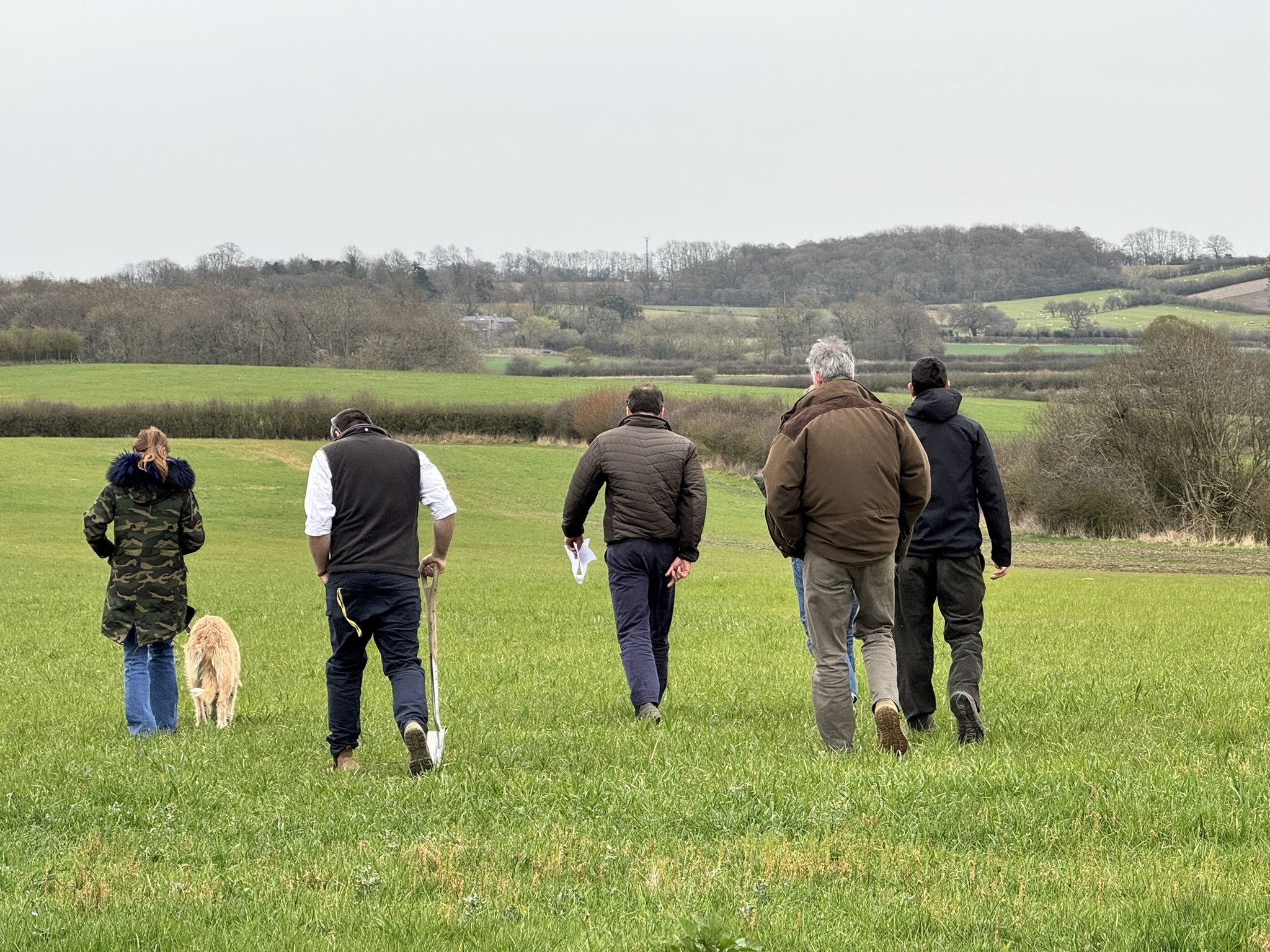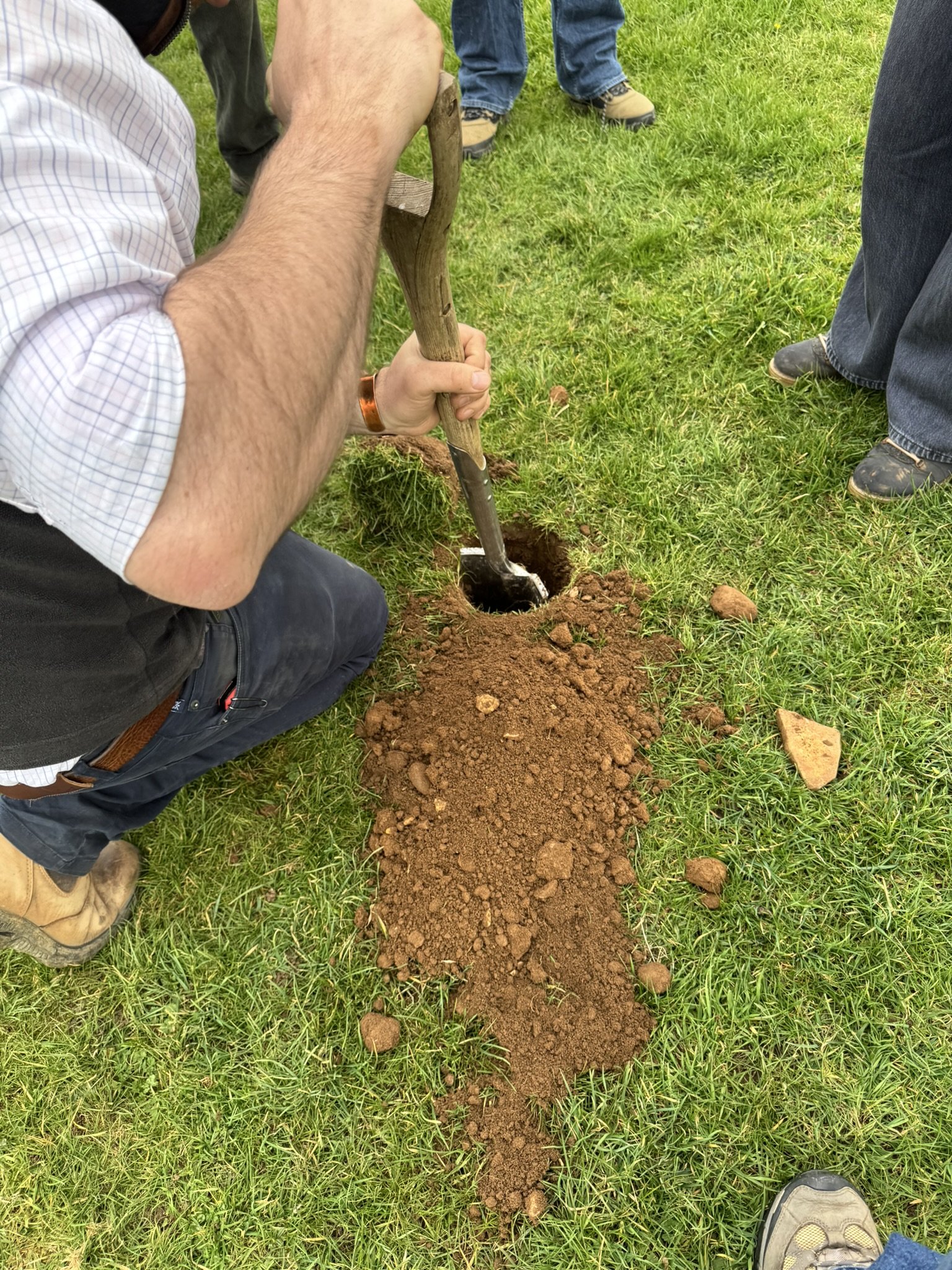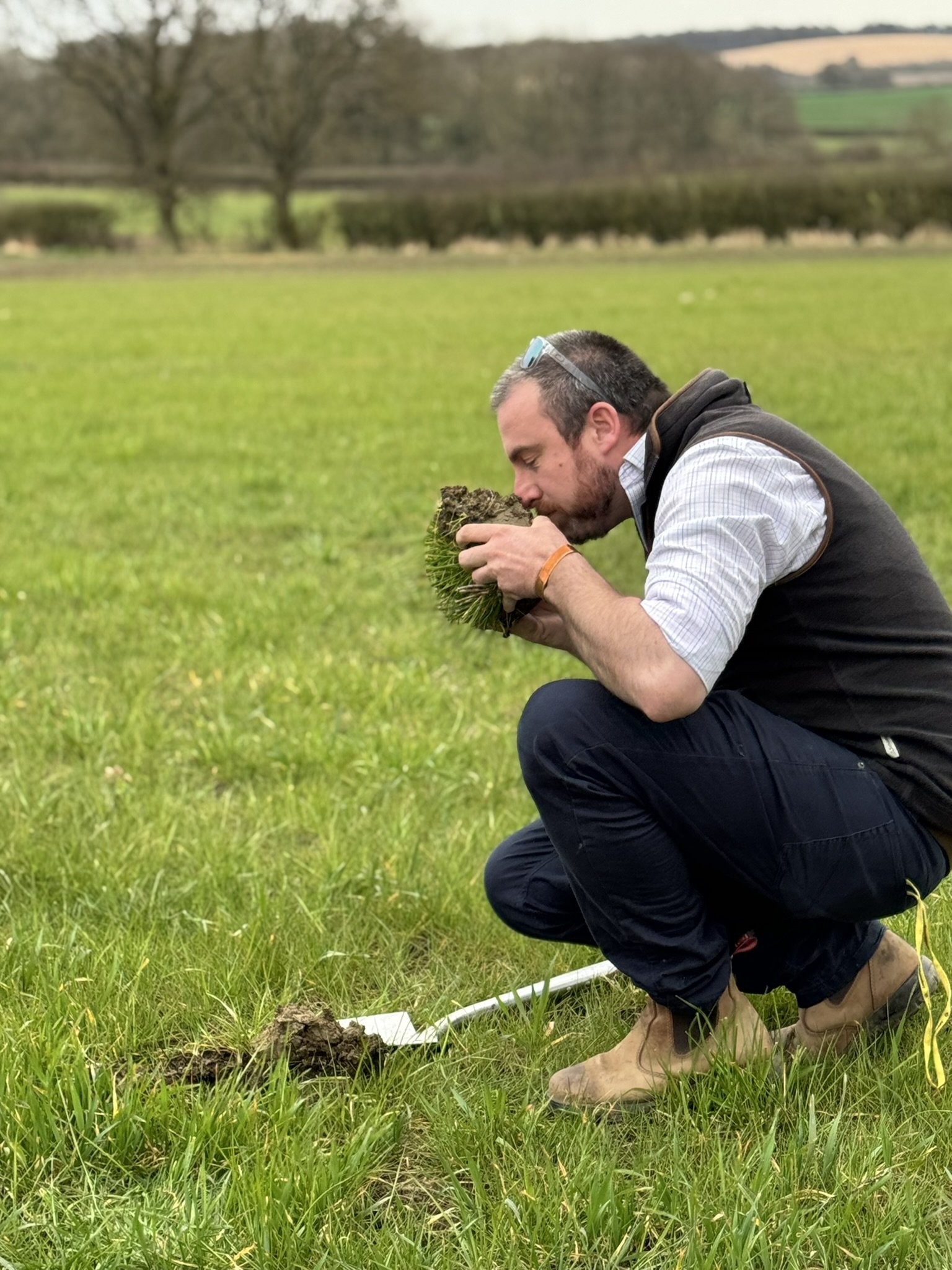HOME FARM
Recently, for the first time in a generation, Alscot Estate had an opportunity to consider its long-term land use strategy. This comes at a time where the agricultural transition in England, alongside a broader political agenda of tackling environmental crises, means that rural land management is now focused not only on quality food production, but also on environmental provision and social value.
As a result, Alscot’s ambition is to farm in a regenerative manner, and in September 2024, we began farming our in-house agricultural land of 715ha, regeneratively for the first time in decades.
In its broadest terms, regenerative agriculture refers to an approach that seeks to work with natural systems to restore and enhance the biodiversity, soil fertility and ecosystem service provision (such as carbon sequestration and water retention) of farmed land.
Regenerative agriculture aims to reverse the degradation of soils, focusing on rebuilding soil organic matter (SOM). Minimising soil disturbance and building up soil organic matter fixes carbon within the soil. Under regenerative models, as soils increase in fertility their water holding capacity also increases, thereby building the natural, biological productivity of the land and encouraging species growth. On the other hand, if land is intensively cultivated, it releases carbon into the atmosphere and water run-off is more frequent. Regenerative agriculture is, therefore, being proposed as a key solution to feeding growing populations, while also tackling climate change and the increasing environmental risk.
Home Farm is managed using regenerative, organic, and sustainable practices under the Government’s Sustainable Farming Initiative (SFI). This program requires a five-year commitment with a min two year conversion process, ensuring strict adherence to sustainable farming guidelines. The conversion process, designed to produce nutrient-rich animal feed, is regenerating the land - improving the soil structure and quality, and laying the foundation for future organic food production, including heritage wheat and vegetables.
To effectively manage and enhance the land, we have conducted baseline surveys and analyses with independent professionals in the following areas:
Soil: Measuring and recording nitrogen, phosphorus, potassium, organic matter levels, soil texture/structure, and water infiltration/retention. Comparative soil surveys are also conducted on inorganic soil elsewhere on the Estate.
Birds: Seasonal surveys (winter, breeding, and summer) monitor bird populations and species diversity.
Plant Life: Arable and grassland surveys document the presence and diversity of plant species.
These surveys will continue to track improvements and ensure accountability.
Current Land Management (as indicated on the map):
• 300 ha herbal leys
• 200 ha legume fallow
• 10 ha wild bird seed plots
• 50 ha temporary grass leys
• 2 ha species-rich grassland
• 50 ha woodland (to be established in 2025, with 8,000 broadleaf trees planted)
• Remaining areas are permanent pastureland
Benefits of Herbal Leys:
Herbal leys improve soil fertility, structure, and water retention while increasing organic matter and benefiting animal health. They also support self-worming and high protein conversion rates. The selected species are based on thorough land assessments.
Legume Fallow Composition:
• 25% Sainfoin
• 20% Lucerne
• 12% Crimson Clover
• 10% Alsike Clover
• 10% White Clover
• 15% Red Clover
• 8% Sweet Blossom Clover
Half of the legume fallow will be cut for composting and reapplied to the soil, while the other half will remain to enhance organic matter.
Additional Biodiversity Initiatives:
6m-wide grass margins around fields help manage water runoff and provide habitats for wildlife, including ground-nesting birds and wetland species.
1,250m of mixed-species hedgerows (hawthorn, blackthorn, dogwood, hazel, holly, guelder rose) create wildlife corridors, shelter belts, and food sources. Native fruit trees (plum, pear, apple) will also be incorporated.
Species-rich grass meadows will support birds, bees, butterflies, moths, and other insects.
Cricket bat willow nursery: Eight mature willow trees were harvested, producing 800 todds (cuttings) for planting. It takes about four years for todds to establish before further cuttings can be harvested and replanted, with full maturation taking approximately 15 years.
We are actively collaborating with leading organisations and researchers to provide valuable evidence on the wider impact of soil health on society. We are engaging with specialists in soil and sustainable earth sciences, bringing together experts from natural and social sciences, engineering, arts, health, and business. This interdisciplinary approach is key to driving debate, fostering innovation, and addressing global sustainability challenges.












